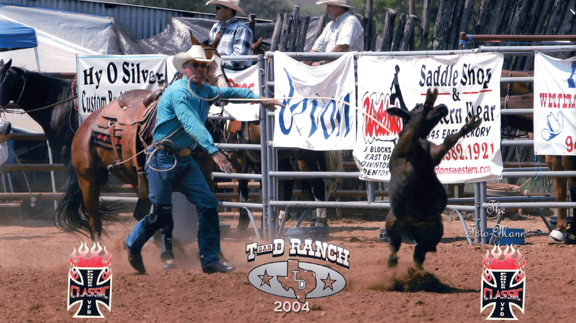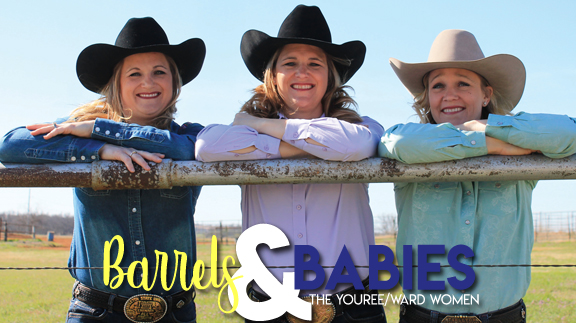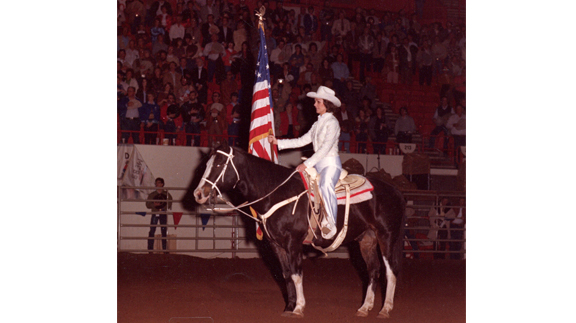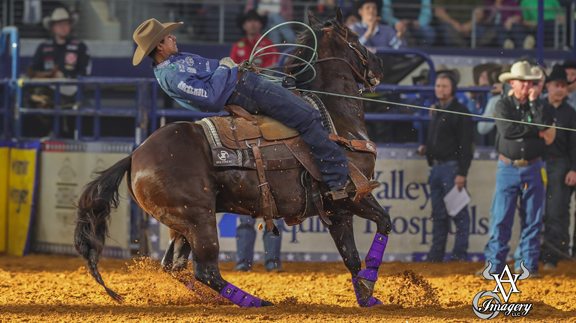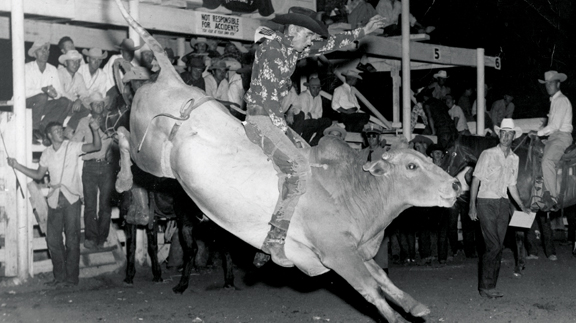Equine
Las Vegas Turns Cowboy
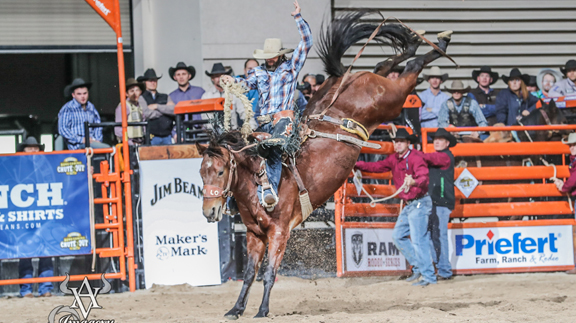
By Phillip Kitts
As the aching heads of rodeo fans, the stiff joints and muscles of rodeo competitors and the weary bodies of contract personnel have made their way home from a long two-week run in the bright lights of Las Vegas, new pages of the history books have been written.
Most rodeo fans know all about the big show that closes out a season of rodeo at the Wrangler National Finals Rodeo. Only the die-hard rodeo fans know how much more goes on starting only days prior to the NFR and all the way through the final round.
You often hear the term Las Vegas turns “Cowboy” in December, as for over 14 days numerous rodeo-based series have their finales. This list includes World Series of Team Roping, Bull Fighters Only (BFO), PRCA permit holders have their top competitors compete for top standings, American Bullfighting wraps up their season and the Youth National Finals bring all their top competitors in each event to crown World Champions.
Along with these major events, Boyd Gaming afforded the opportunity for the competitors who placed sixteenth through twentieth to compete in a chute-out style rodeo. Boyd gaming also invites some of the top names in rodeo that no longer chase the coveted WNFR appearance or due to injury or other interference did not earn enough money to compete a the WNFR.
Nearly every avenue of the rodeo world is covered during this two-week cycle in Las Vegas and numerous World Champions are crowned and millions of dollars are paid out.
The Boyd Gaming Cinch Chute Out paid its own collection of big checks during its three-day series of events. This chute-out style rodeo affords eight competitors in each event two days to accumulate enough points to return for the final round. On day three, the top six in each event return for one more round of competition in which the field is whittled down to the top three cumulative scores.
The championship round brings in the top three where all the scores are wiped clean and it comes down to one ride or run for all the marbles. This star-studded event is quickly becoming a fan favorite due to its who’s who cast of athletes.
Names in the past that have graced the Orleans Arena have been Joe Beaver, Huntsville, Texas, eight-time World Champion in tie down roping; Cole Elshere, Faith, S.D., three-time WNFR saddle bronc qualifier; Casey Colletti, Pueblo, Colo., WNFR bareback qualifier.
This year showed no change of big names that made the trip to Las Vegas: Fred Whitfield of Hockley, Texas, eight-time World Champion in tie down roping; Kaycee Field of Payson, Utah, five-time world champion in bareback; and the infamous wild man Wade Sundell of Buxholm, Iowa, who brought his saddle bronc riding skills to the arena.
When the dust settled on Saturday evening, Cactus Saddles and Montana Silversmith Buckles were awarded to the chute-out champions. In bareback, Justin Miller of Montana held on through the four rounds to collect the title. The Canadian steer wrestling master Curtis Cassidy collected his share of the riches from the chute out while Jake Orman and Will Woodfin took the title in team roping. In typical Wade Sundell fashion, the saddle bronc title was taken with showmanship and gusto with an event-high score of 90 points.
In tie down, the young Caldwell, Texas, resident Westyn Hughes carried his momentum of a round two win to the overall championship, putting a stamp on a weekend of outstanding roping. The barrel racing competition once again came down to tenths of a second with Kelly Tovar of Rockwell, Texas, edging out Jana Bean of Ft. Hancock, Texas, for the event win. The bull riding event included top PBR and PRCA names such as J.W. Harris of Goldthwaite, Texas; Shane Proctor of Grand Coulee, Wash.; and Stetson Lawrence of Williston, N.D. The final round proved to be the decision maker in which Shane Proctor held out for the eight seconds to be the only qualified ride for the championship round and provided Proctor with the win.
Several WNFR events had nail biting endings to the year while other events were almost wrapped up before the WNFR rodeo even began. Here is how the championships broke down.
Winning the all-around (competed in two or more events, either timed or rough stock events throughout the year) with a year-end total of $341,560.29 was Tuf Cooper of Decatur, Texas. In bareback, Tim O’Connell of Zwigle, Iowa, closed out 2017 with his second consecutive world title with a year ending $371,415.80.
In steer wrestling, Tyler Pearson of Louisville, Miss., squeezed enough money from the go-arounds to capture the World Championship with a year-end total of $265,457.02. Team roping is split into two parts and awards each portion of the team with their own world championship. This year on the heading side Erich Rogers of Round Rock, Ariz., claimed the title with $265,416.73 and on the heeling end Cory Petska of Marana, Ariz., took the gold buckle with $265,416.73.
Saddle bronc may have provided one of the most exciting close outs of the year with Ryder Wright of Beaver, Utah, and Brody Cress of Hillsdale, Wyo., battling it out to the final two rounds. In the end, 19-year-old Ryder Wright, in only his second year as a PRCA competitor, carried on the family tradition by winning his first world title with a year-end total of $284,938.38.
In tie down, the world title returns to the great state of Texas with the Brazilian phenomenon Marcos Costa of Childress, Texas, as he closes out his championship season with $317,421.33 in winnings. The barrel racing title went to Nellie Miller, who carried home $308,498.29 for her season’s haul. Last, but not least, Sage Kimzey of Strong City, Okla., continued his dominance of the world of pro rodeo bull riding with his fourth consecutive world title where he collected $436,479.19 for his 2017 season.
Other notable championship awards given during the Boyd Gambins Chute-Out week in Las Vegas, Bullfighters Only (BFO) Roughie Cup was awarded to Tanner Zarnetsky of Texarkana, Texas, and the BFO World Championship was awarded to Weston Rutkowski of College Station, Texas.
American Bullfighters awarded their championship to a young superstar of bullfighting, Noah Krepps of Jasper, Ark., who not only won the American Bullfighting title but also finished second at the BFO championships. Noah fought eight bulls in eight days, winning in six of the eight rounds between BFO and the American Bullfighting series.
Once again, December in Las Vegas proved to be historical in many ways. Now the rodeo world will take a short breath and recover before the race gets intense for the 2018 season.
Equine
Equine Metabolic Syndrome (EMS) – The Easy Keeper Disease
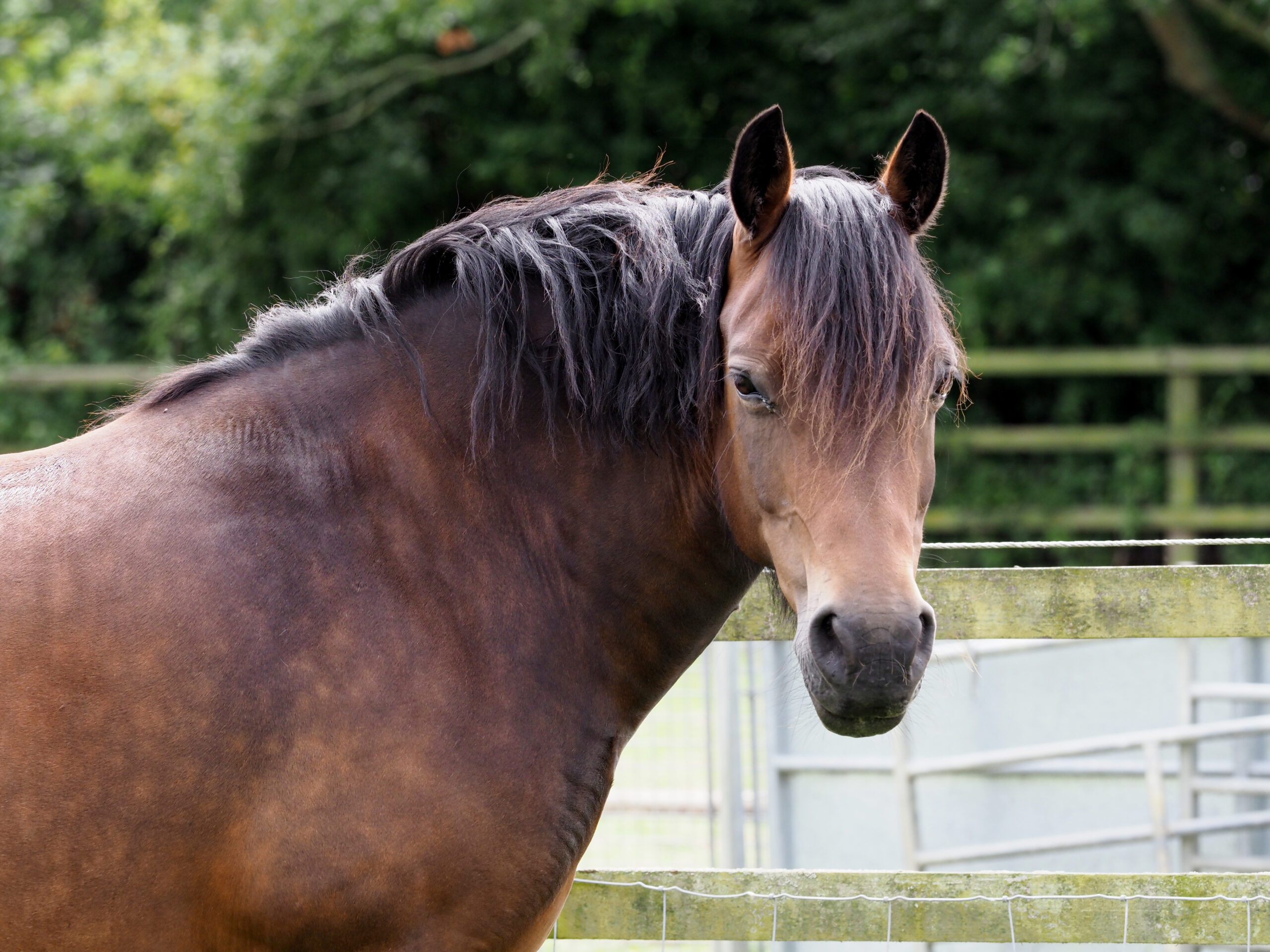
By Garrett Metcalf
It is that time of year when cases in veterinary practices that are diagnosed with EMS or Equine Metabolic Syndrome spike. The reason cases of EMS spike are because the fast growth that pastures experience in the spring. Before EMS was well understood or discovered, many of these horses were diagnosed with grass founder, but through research the process of the disease is now better understood. The disease is caused by obese overfed horses and breeds of horses that have “hardy genes.” These are breeds that generally need less caloric intake to meet their daily energy needs. Although some breeds are at higher risk such as ponies, just about any breed can develop EMS.
Risk Factors for EMS
The key risk factor for development of EMS is weight gain, breed, high caloric intake and very little or inconsistent exercise. Horses that gain weight easily on pasture turn out or are getting too many calories from grains plus hay can be put at risk of EMS. Increasing levels of obesity in horses causes insulin resistance just like in humans, but fortunately for the horse, they have a very robust pancreas that is able to keep up with the extra demand for insulin to provide adequate amounts of glucose to tissue and organ systems despite the insulin resistance. This overproduction of insulin in order to keep up with the resistance causes a very key clinical sign of laminitis, which can be the most debilitating and difficult consequence of EMS. Over 90% of horses will present for laminitis as the first clinical sign of EMS. Unfortunately, the clinical signs for laminitis can go undetected for many months or even years in some cases until the progression of the laminitis reaches a very severe tipping point. It is not uncommon that horses with this disease go undetected for variable periods of time and have x-rays to prove it. Many times, horses will have rotation of the coffin bone in the hoof capsule upwards of 10 degrees before the horse is lame enough to alert their owners that there is a serious problem. It doesn’t seem possible that a horse can get that bad overnight, but rather in many cases they have mini laminitic episodes that are almost silent to many owners that lead to this much damage to their feet over time.
Identifying Horses at Risk
A common feature that puts horses at risk that owners can detect and address themselves before a laminitic crisis occurs is adipose deposited in certain areas of the horse’s body called regional adiposity. Regional adiposity describes fat or adipose tissue that is deposited in different regions of horses that owners should watch for if their horse is gaining weight. These common areas are the neck, commonly referred to as cresty necks, around the tail head, and sheaths of geldings or stallions. If these areas are noticed to be enlarging, especially in the spring when there is an abundance of fresh grass to graze on plus weight gain, then steps need to be taken to prevent the development of EMS.
Managing an Easy Keeper
It is very common to hear owners and veterinarians refer to heavy horses as easy keepers, but there can be some serious consequences of ignoring or brushing it off as just an easy keeper horse. Simple steps can be taken to reverse or reduce the risk of horses developing EMS by decreasing daily caloric intake. First, it is recommended to remove all grain from a horse’s diet including treats. Drastically reducing turn out time to graze especially fast growing lush grass is absolutely necessary in horses at risk of grass founder caused by EMS. There is some conflicting evidence as to when is the best time of day to allow a horse to graze that is sensitive to high sugars in lush growing grass. Some research has found that sugar levels peek later in the afternoon because of an abundance of sunshine and fully ramped up photosynthesis process that occurs in the grass. It is suggested then if grazing is allowed or deemed safe, that morning grazing is a safer time, but sometimes letting an at-risk horse graze is not worth the consequences. Other methods of allowing safe grazing are to mow the grass very short to minimize the volume of grass intake in a given period of time. If mowing is not an option, specially designed grazing muzzles allow pasture turn out but restrict the amount of grass taken in through the muzzle. Do not worry, as many horses are very quick to figure out how to get grass through the small hole in the muzzle and also allow the intake of water. It is recommended to have a leather poll strap on their halters to prevent injury when turned out while wearing a halter. Dry lot management is sometimes the only option, especially in horses that already have EMS. Keeping a horse on dry lot with no access to fresh grass and feeding more mature hay is sometimes needed to manage more severe cases. There are no current medications to help reduced the effects of insulin resistance due to obesity in horses, but some medications can be used to help with weight loss such as Thryo-L (levothyroxine) combined with consistent exercise.
Laminitis
Laminitis is the most debilitating and painful outcome of EMS, not to mention life threating. It is also the most expensive and difficult aspect of managing a horse with EMS. In order to properly manage laminitis caused by EMS, the horse needs to be examined by a veterinarian, radiographs need to be taken of the feet to assess the severity of the laminitis and an experienced farrier needs to be heavily involved with the management of the feet. If the disease is caught early, proper trimming may be all that is needed plus the other management aspects employed, of course, but in many cases corrective therapeutic shoeing is required. Pain management is another key aspect of addressing laminitis. NSAIDs or non-steroidal anti-inflammatory drugs, opioids, aspirin and an anticonvulsant drug called Gabapentin can help block or reduce pain of laminitis that horses experience. Some of these drugs do carry a risk of serious side effects so careful monitoring and proper dosages need to be on the order of a veterinarian to minimize the risk of side effects.
It cannot be repeated enough that the best cure for disease is through prevention. Taking early appropriate steps to keep horses from developing EMS is by far the best way to prevent the disease from occurring. If there is concern your horse is at risk of EMS, please talk to your veterinarian to determine if management and diet changes need to be made to prevent the development of this disease.
Equine
Cudd Quarter Horses Production & Consignment Sale Benefits Rein in Cancer
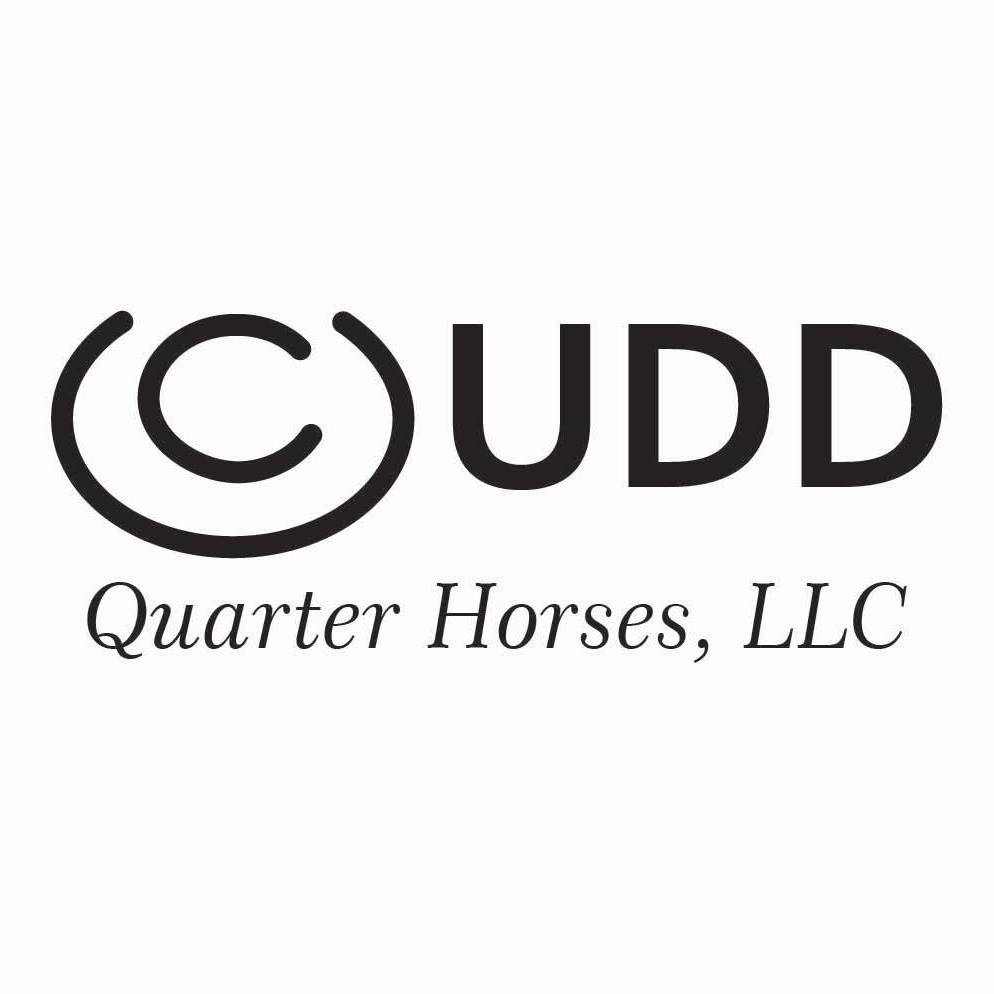
The Cudd Quarter Horses 38th annual sale is set for June 8 at the ranch in Woodward, Okla., and a special horse sold will benefit the Sooner State-based 501(c)(3) Rein in Cancer. Once again, Alice Goldseeker, a sorrel yearling mare by Bay John Goldseeker (King W Goldseeker x Jazzabell Jazz) out of Alices Cat (Cat Ichi x Squirrel Tooth Alice), will sell as lot #24 and, thanks to the generosity of Renee Jane Cudd, the proceed of her sale will go to benefit Rein in Cancer.
Rein in Cancer co-founder Shorty Koger expressed gratitude, saying, “We deeply appreciate Renee Cudd’s support of Rein in Cancer. The funds we provide are crucial for those facing the many challenges of cancer treatment.”
Cheryl Cody, President of Rein in Cancer, emphasized the importance of community support: “Support for Rein in Cancer means so much. The funds are allocated in two key ways: first, to sustain the Shirley Bowman Nutrition Center, which offers care to cancer patients regardless of their financial situation; and second, to provide direct financial assistance to individuals in the horse industry undergoing cancer treatment. Cancer affects everyone, whether personally or through loved ones, making this cause incredibly important. We are extremely grateful to Renee for her support.”
Cudd Quarter Horses was begun in 1985 by Renee Jane Cudd and her late husband, Bobby Joe Cudd. The ranch has been a leading breeder of AQHA Ranch and Roping horses for over 30 years, and the annual Production Sale is always a popular event. Renee noted, “Bobby Joe passed away in 2005, and I feel so lucky that I have been able to continue with it.”
For information on the sale, visit the Cudd Quarter Horses Facebook page.
Rein in Cancer was founded in 2007 by three friends: Shorty Koger of Shorty’s Caboy Hattery, Cheryl Cody of Pro Management, Inc., and healthcare professional Tracie Clark. These founders continue to lead the 501(c)(3) organization, which has raised millions of dollars. Rein in Cancer funds and supports the nutrition clinic at the University of Oklahoma’s Charles and Peggy Stephenson Cancer Center, offering services to all patients regardless of their ability to pay. Additionally, the organization provides direct financial assistance to individuals in the Western performance industry undergoing cancer treatments.
For information on Rein in Cancer, visit ReinInCancer.com.
Equine
Equine Flexural Limb Deformities

By Dr. Garrett Metcalf
Flexural limb issues can occur in different age groups of horses, starting with newborns up to two- to three-year-olds. These issues occur somewhat predictably in age groups and can be addressed rather quickly when needed. There are various treatments and methods that can be used to address flexural issues. This article will discuss the most common flexural abnormalities and treatment methods.
Foal Flexural Issues
Foal flexural issues are often considered congenital flexural limb abnormalities because they are born with them. We don’t fully understand why this occurs but there is some evidence in the human literature that lack of fetal activity in the womb causes club feet in babies. In foals, it is thought that uterine positioning is to blame for part of the contracted tendons. Other causes can be exposure of the mare to toxic plants or substances that may be toxic to the fetus.
The most common area that a foal will have contracture of limb is at the carpus or knee. These foals will not be able to fully extend the knee and often will affect both at the same time. These foals can have difficulty standing to nurse or will get fatigued quickly and will not be able to stand for longer periods of time. There can also be damage to the extensor tendons or even rupture of extensor tendons caused by the high strain placed on them when the foal tries to stay standing. The rupturing of these tendons is not overly concerning but the lack of extensor function can make the flexural limb deformity worsen.
Other common locations of flexural limb deformities can be at the fetlock or coffin joint level. These deformities are not usually as detrimental to allowing the foal to stand and nurse properly compared to carpal flexural deformities. These deformities can be addressed similar to carpal deformities with some exceptions.
Treatment of Flexural Deformities
Splints or casts can be used to stretch and support the effected limbs of foals. Splints are often preferred by most veterinarians because they can be repositioned or reset as needed. Splints are easier to place on the limbs of foals but they do need resetting every 24 to 48 hours. Casting of the limbs is more rigid but is not adjustable once placed. Casting is often needed in more severe cases and requires changing frequently. Whenever placing these devices, care must be taken to prevent splint or cast sores because foal skin is rather delicate.
Surgical intervention is needed in some cases of carpal flexural deformities. A study out of Australia found that cutting of two muscle/tendon groups on the back of the carpus greatly improved the ability to extend the carpus with splinting methods. Cutting of these tendons do not have consequence to future athletic function. The two muscles are called flexor carpi ulnaris and ulnaris lateralis.
An antibiotic called Oxytetracycline is helpful to treat flexural limb deformities because of its side effect of causing tendon laxity. The laxity is created by chelating calcium within the tendons and allows the relaxation of tendons. This method does have some risk because of the high dose required and renal injury that it can cause when not administered with IV fluids.
Toe extension shoes are used when it comes to dealing with lower limb flexural limb deformities. These shoes are often applied with adhesives and after the splinting or casting is no longer needed. The toe extension shoe allow foal to continue to stretch those tendons every time they take a step and prevent from becoming contracted again.
Older horses (six months or older) with contracted tendons often get acquired limb deformities and the horses need surgical intervention to correct these deformities. These surgeries cut or release check ligaments that allows the musculotendinous unit of the deep digital or superficial digital flexor tendon to elongate. The deep digital flexor tendon is responsible for causing club feet or a flexural limb deformity at the coffin joint. The superficial digital flexor tendon is responsible flexor tendon that causes a flexural limb deformity at the fetlock joint. The check ligaments attach the tendon to bone and do not allow the tendon to elongate past a certain point. By eliminating these ligaments the flexural limb deformity can be corrected by allowing the muscle to stretch since the tendon is much more rigid.
Flexural limb deformities can be caused by excessive laxity or weakness of the tendons. These deformities are often seen in premature foals or foals that are born at a much smaller birth weight. The excessive laxity will cause the toes of there feet to flip up in the air and the fetlocks to be touching the ground. The areas where the skin is contacting the ground will cause sores and abrasions. If these areas are note protected the wounds can get into deep structures causing serious infection and injury the flexor tendons.
Treatment for tendon laxity is to add heel extension shoes to keep the toes flat to the ground. The extension behind the foot forces the toe down under the foals own weight. As the foal becomes stronger from normal activity the muscle attached to the tendons can support the foal and the limb laxity will correct itself. Abrasions still can occur even with heel extension shoes are in place so bandages need to be applied to protect these areas.
Flexural limb issues are a common issue that horses and owners will face. It is best to have your horse evaluated by a veterinarian whenever these problems are suspected. Foal flexural limb deformities can be life threatening because of the limitation of standing on time to nurse colostrum. Without colostrum within the first hours of life the foal is a much higher risk of sepsis and death.
Read more in the August 2023 issue of Oklahoma Farm & Ranch.
-

 Country Lifestyle7 years ago
Country Lifestyle7 years agoJuly 2017 Profile: J.W. Hart
-

 Outdoors6 years ago
Outdoors6 years agoGrazing Oklahoma: Honey Locust
-

 Country Lifestyle3 years ago
Country Lifestyle3 years agoThe Two Sides of Colten Jesse
-

 Outdoors4 years ago
Outdoors4 years agoPecan Production Information: Online Resources for Growers
-

 Equine7 years ago
Equine7 years agoUmbilical Hernia
-

 Attractions7 years ago
Attractions7 years ago48 Hours in Atoka Remembered
-

 Farm & Ranch6 years ago
Farm & Ranch6 years agoHackberry (Celtis spp.)
-

 Outdoors3 years ago
Outdoors3 years agoSuzy Landess: Conservation carries history into the future

